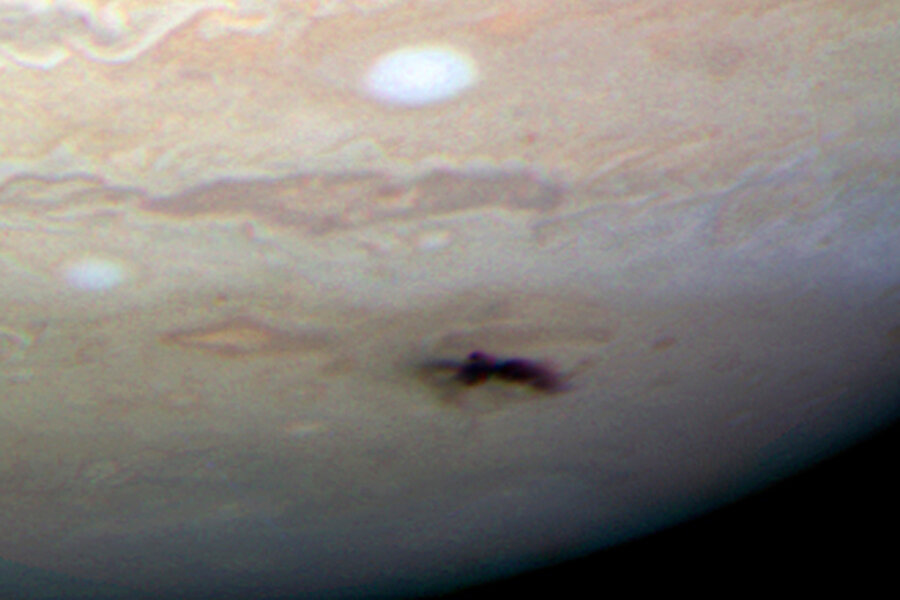Massive bruise on Jupiter probably caused by asteroid
Loading...
A mystery object that slammed into Jupiter last year leaving a massive bruise was probably an asteroid, astronomers believe.
The collision was first spotted by Australian amateur astronomer Anthony Wesley as we reported in July last year.
Days later, the Hubble space telescope zoomed in on the impact site. Now an analysis of the resulting bruise and how it developed has given clues about the object that struck our biggest planet.
IN PICTURES: By Jove, it's Jupiter
Impacts on Jupiter had been considered rare events. But the 2009 strike, with the power of a few thousand nuclear bombs, came just 15 years after more than 20 pieces of Comet Shoemaker-Levy 9 were seen to plunge into the dense clouds enveloping Jupiter.
Examination of the latest scars leads astronomers to think that the latest impactor was an asteroid about 1,600ft (500 meters) wide.
Jupiter lies at one edge of the asteroid belt, a zone swarming with chunks of debris that never managed to coalesce to form a planet in the early days of the solar system.
Astronomers have now compared Hubble’s close-up views of the 1994 impacts with the scars left by the mystery object in 2009.
Heidi Hammel of the Space Science Institute in Boulder, Colorado, led a team that took pictures of the impact sites using Hubble’s recently installed Wide Field Camera 3 and newly repaired Advanced Camera for Surveys.
Their analysis revealed key differences between the new decision and that in 1994. There was a distinct halo around the 1994 impact sites in Hubble ultraviolet images, which are believed to be evidence of fine dust arising from a comet-fragment strike.
There was no such halo around the elongated scar left by the 2009 event which leads experts to think that there was a lack of lightweight particles and so the impactor was a more solid object, likely to be an asteroid.
They conclude that the object probably came from the Hilda family of asteroids, a secondary asteroid belt consisting of more than 1,100 chunks of rock orbiting near Jupiter.
Hammel says the 2009 impact shows how important work is still being performed by amateur astronomers. “This event beautifully illustrates how amateur and professional astronomers can work together,” she says.
The study by Hammel’s team appeared in the June 1 issue of The Astrophysical Journal Letters.
• Discover space for yourself and do fun science with a telescope. Here is Skymania’s advice on how to choose a telescope. We also have a guide to the different types of telescope available.
Paul Sutherland blogs at Skymania News
View all of Skymania News's posts on the Monitor.





